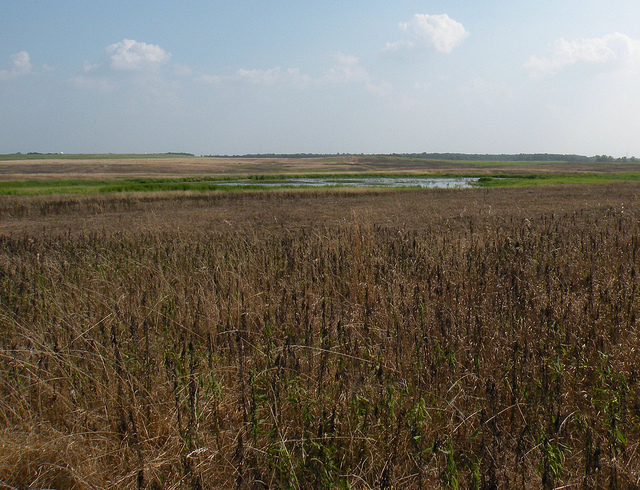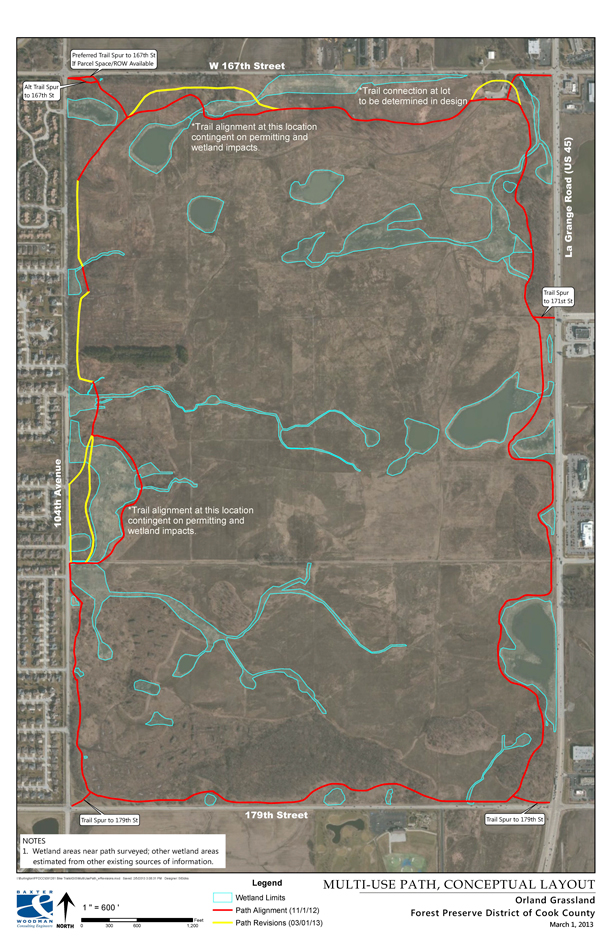New Orland Grasslands trail stirs environmental concerns
By Chris Bentley

New Orland Grasslands trail stirs environmental concerns
By Chris Bentley
The Forest Preserve District of Cook County released plans Monday for a trail and bike path in Orland Grasslands, but some environmentalists say the project could jeopardize the recovery of a fragile ecosystem by fragmenting land used by migratory birds.
Though site volunteers said they felt their concerns were largely acknowledged by the District’s design team, they remain apprehensive about the trail’s southeast segment, which bows around the west side of a large pond that fronts onto La Grange Road.
“Every single inch matters,” said Pat Hayes, Orland Grasslands’ site steward. “What we’re dealing with is not just a pretty place. This is sustenance for ecosystems and species that have nowhere else to go.”
A letter from the Bird Conservation Network cited several bird species known to nest in the Grasslands — Henslow’s Sparrow, Dickcissel, Grasshopper Sparrow and Bobolink — that could be affected, as well as shorebird species known to stopover on the site during their migration. Though small, a path separating the pond from the Grasslands’ interior could deter birds and turtles from critical mud flats along the water’s edge.

“We understand their concerns and took this issue seriously,” said the Forest Preserve District’s Karen Vaughan. “In this instance, there was no ideal alignment of the trail that would fully satisfy all everyone, so our challenge was to find the best possible balance. We think we’ve done that with the current alignment.”
Originally the trail’s western leg along 104th Avenue also jogged inward along the interior edge of a large wetland. Revised plans from the District moved the trail closer to the site’s perimeter at several points to minimize its impact on restored areas amid a tenuous recovery.
The District also agreed not to mow the trail after discussions with local environmentalists, who worried mowers would track in weeds and invasive species from other sites.
By tying in with bike path networks in the Southwest suburban communities of Orland Park and Tinley Park, the Orland Grasslands trail is meant to draw more visitors into the site. Pat Hayes said contrary to popular opinion, environmentalists are in full agreement with the District about that.
“Nature needs people,” she said.
Public engagement could garner some new site volunteers, Hayes said, and generally improve the community’s attitude toward natural areas. Signs and viewing points along the trail will direct visitors’ attention to the surrounding ecosystem.
The Orland Grasslands are a vast preserve spanning more than 1,000 acres, following an acquisition the District made last fall in the midst of an ongoing restoration project aimed at rehabilitating prairie, wetland, oak savanna and oak woodlands ecosystems. Besides a small gravel parking lot in the northeast corner of the site, the trail will be the only developed access to the Grasslands’ interior.
The trail still needs to pass engineering and permitting hurdles, but a letter from the District’s chief landscape architect indicates its design is unlikely to change significantly. The District expects to begin construction this fall.

